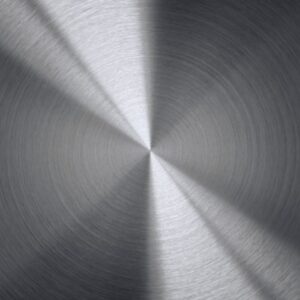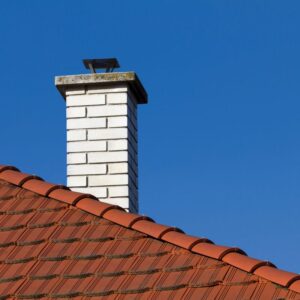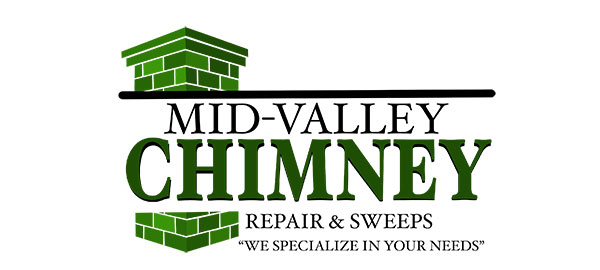At times, it seems chimneys are overlooked in the grand scheme of home maintenance. However, your chimney plays a vital role in the safety of your home and functionality of your fireplace or wood stove system.
Among the chimney components, the chimney liner (also known as a flue liner) is arguably one of the most critical. While it may be out of sight (and out of mind), knowing when your chimney flue liner needs to be replaced can save you from a host of headaches, large and small.
Do You Need a New Chimney Liner?
While there is no certain way to tell whether your chimney liner needs to be replaced without having it professionally inspected, there are tell-tale signs that may indicate a problem. The Chimney Safety Institute of America (CSIA) recommends that chimneys be inspected annually, and following this recommendation will help preserve and maintain your chimney. Aside from that, if you see any of these signs, it’s time to call a certified pro…
✔️ Visible Cracking
 One of the most readily apparent signs that your chimney liner may need replacing is cracking. Cracks can appear on the interior surface of the liner for a number of reasons, including simple wear and tear. Years of exposure to extreme temperature fluctuations can take their toll and mean it’s time for your flue liner to take hard-earned retirement! Cracks compromise the integrity of the liner, allowing smoke, heat, and even dangerous gases, such as carbon monoxide, to escape into your home.
One of the most readily apparent signs that your chimney liner may need replacing is cracking. Cracks can appear on the interior surface of the liner for a number of reasons, including simple wear and tear. Years of exposure to extreme temperature fluctuations can take their toll and mean it’s time for your flue liner to take hard-earned retirement! Cracks compromise the integrity of the liner, allowing smoke, heat, and even dangerous gases, such as carbon monoxide, to escape into your home.
While this cracking may be visible, these cracks can be difficult to spot with the naked eye – and especially so since they’re located inside the chimney.
Regular inspections and maintenance are essential to catch this issue in a timely way and reduce the risk of chimney fire or carbon monoxide poisoning.
✔️ Smoke in the Home
Apart from actually seeing chimney liner cracks or damages, their presence may be made known through smoke in your home. When your liner is in good condition, it directs smoke and other byproducts of combustion up and out of your house. The presence of smoke or fumes in your home is definitely evidence of a ventilation issue – and that issue may have to do with the condition of the flue liner.
Obviously, smoke in your living space is unpleasant and hazardous, both to your health and to your home.
✔️ Flaking Debris
If you notice small pieces of flaking debris inside your fireplaces or in your chimney, it’s time to take action. These flakes may be pieces of the liner or flue tiles breaking away, and while the breakage may result from a variety of causes such as moisture, corrosion, or wear, the result will be similar – intervention to restore or replace the chimney liner.
The presence of masonry or similar debris is concerning because it suggests that the liner’s condition has deteriorated substantially. This adversely affects the liner’s ability to safely contain heat and gases, and it can create blockages that impair proper ventilation. The fireplace should not be used until a professional solution has been put in place.
What To Do if Your Chimney Liner Is Compromised
In addition to performing expert inspections with integrity, we at Mid-Valley Chimney Repair can help resolve flue liner issues.
In some cases, we can do restoration work on your liner using HeatShield. HeatShield may be an effective solution if your chimney has a terra cotta flue tile liner system with only small cracks created by regular use. This system uses a sealant engineered to help fill minor cracking and restore clay liners.
If damage is advanced or HeatShield isn’t suitable for the repair, we would recommend relining your chimney with the appropriate-sized, durable chimney flue liner that will serve you for years to come. Stainless steel liners boast numerous benefits in terms of safety, durability, and efficiency.
Why Is the Chimney Liner Essential?
- Chimney flue liners protect the masonry of your chimney from the corrosive effects of combustion products.
- They ensure that smoke and gases are vented safely outside.
- They present excessive heat transfer to nearby combustible materials.
A deteriorating liner can diminish the structural integrity of your chimney. As it weakens, the bricks and mortar of the chimney become exposed to the harsh interior conditions of the flue, accelerating decay – making timely liner replacement the most cost-effective move. A damaged liner can also increase the risk of chimney fire and expose you to toxic gases.
Be Proactive: Book a Chimney Inspection With Us
 The unfortunate truth is that by the time flue liner damage is starkly obvious to the homeowner, the damage is usually quite advanced. Being proactive with routine chimney inspections allows you to take action sooner. Certified chimney technicians have the expertise and equipment to identify problems earlier, when attacking them is likely to be less involved and less costly.
The unfortunate truth is that by the time flue liner damage is starkly obvious to the homeowner, the damage is usually quite advanced. Being proactive with routine chimney inspections allows you to take action sooner. Certified chimney technicians have the expertise and equipment to identify problems earlier, when attacking them is likely to be less involved and less costly.
A professional inspection offers an accurate assessment of your liner’s condition, greater assurance of safety, and an expert recommendation of measures to take to address issues optimally.
Long story short – stay proactive and, if you suspect an issue, don’t delay in seeking assistance.
Call or Book Online Today
Leaving chimney flue liner issues unaddressed is a serious matter, but never fear. By taking the appropriate measures, you’ll be safely enjoying your fireplace again soon – and with the assurance that your home and health aren’t being compromised by a weakened system.
Reach out to us for help. Call 513-727-0994 or book online with us today.
